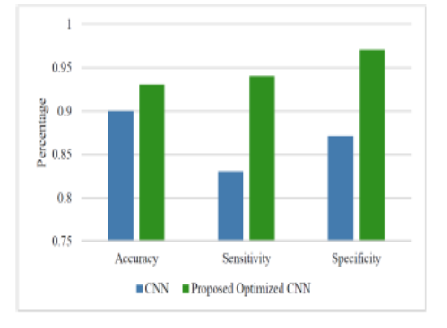


Indian Journal of Science and Technology
DOI: 10.17485/IJST/v16sp1.msc15
Year: 2023, Volume: 16, Issue: Special Issue 1, Pages: 110-120
Original Article
Laldinsangi Tlaisun1*, Jamal Hussain1, Vanlalruata Hnamte1, Lalrinawma Chhakchhuak2, Lalchhanhima Hmar3
1Department of Mathematics and Computer Science, Mizoram University, India
2Department of Computer Science, Government Zirtiri Residential Science College, India
3Department of Computer Science, Government Serchhip College, India
*Corresponding Author
Email: [email protected]
Received Date:23 January 2023, Accepted Date:09 June 2023, Published Date:06 September 2023
Objective: The objective of this study is to develop an efficient deep learning approach for the accurate detection of skin cancer in modern healthcare settings. Skin cancer is a prevalent and potentially life-threatening disease, and early detection plays a crucial role in improving patient outcomes. Traditional methods for skin cancer detection often suffer from limited accuracy and efficiency, highlighting the need for advanced techniques that can effectively analyze medical images and provide reliable diagnoses. Methods: In this research, we propose an innovative deep learning approach that is whaleoptimization based on convolutional neural networks (CNNs) to achieve efficient and accurate skin cancer detection. We leverage a large dataset of annotated skin images to train our model, allowing it to learn discriminative features associated with different types of skin lesions. Transfer learning enables the utilization of pre-trained models on large-scale image datasets, enhancing the performance of our approach even with limited labeled data. Results: Our experimental results demonstrate the effectiveness of our proposed deep learning approach for skin cancer detection. The model achieves high accuracy in distinguishing between malignant and benign skin lesions, outperforming traditional methods and showcasing its potential as a valuable tool for dermatologists and healthcare professionals. The efficient design of our approach enables real-time analysis of skin images, facilitating timely and accurate diagnosis. Novelty: In the initial convolution layer, a 7x7 filter is employed, and then the max-pooling layer is applied. The dense block consists of a convolution layer with filter sizes of 11 and 33, which is added to the max-pooling layer following the dense block. This design has four dense blocks, to which are added convolution blocks for each block and a transition layer. After the last dense block, a 77 filter is applied for the global average pooling layer of CNN, which follows the fully connected layer. The architecture of ResNet bypasses a few ResNet connections in order to establish the direction relationship. The ResNet makes use of bottleneck blocks, which are employed to decrease a parameter.
Keywords: Deep Learning; Convolutional Neural Network; Skin Cancer; Whale Optimization; ResNet; DenseNet; Inception
© 2023 Tlaisun et al. This is an open-access article distributed under the terms of the Creative Commons Attribution License, which permits unrestricted use, distribution, and reproduction in any medium, provided the original author and source are credited. Published By Indian Society for Education and Environment (iSee)
Subscribe now for latest articles and news.